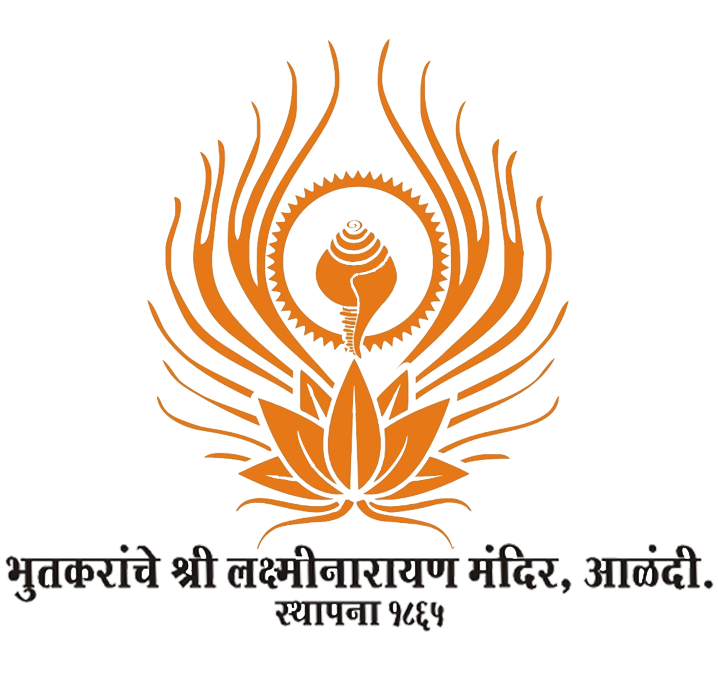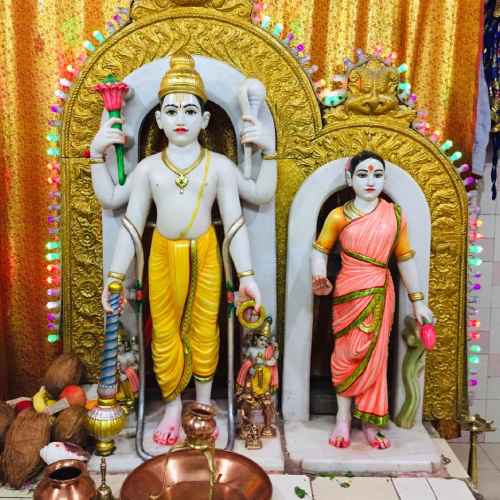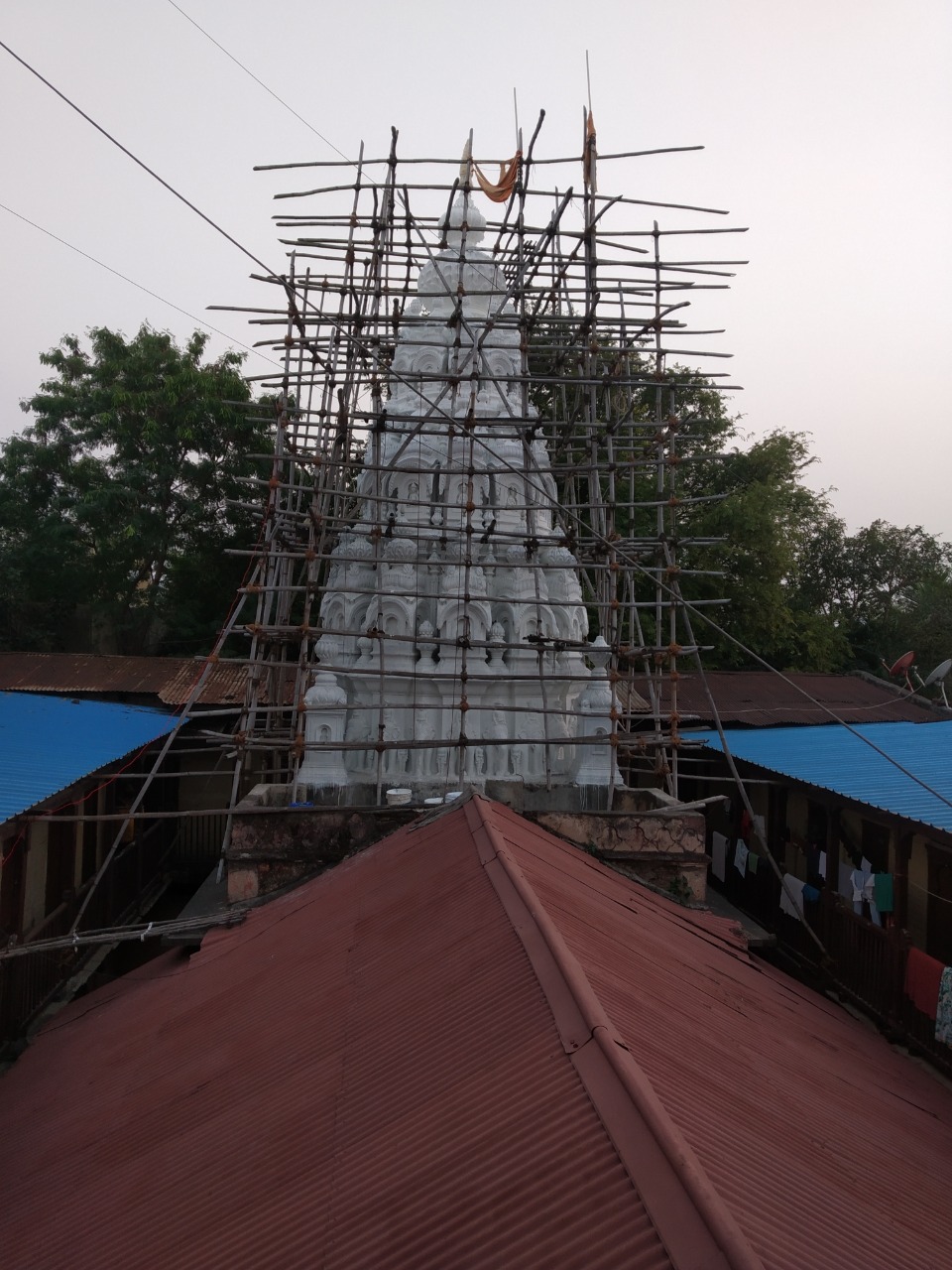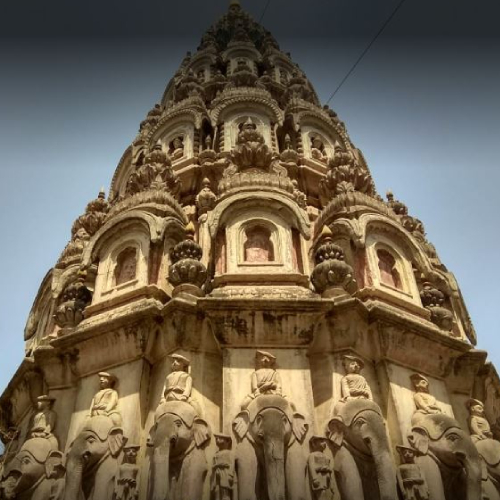Nag Panchami is celebrated on the fifth day of the waxing moon of the month of Shravana during which cobras are offered milk and worshipped as representatives of Ananta-Sesha the cosmic serpent, keeper of the earth’s fertility and destroyer of pests.
सर्वांचें स्वगत / Welcome All
By Bus- 45 mins
25kms to reach
आज दिनांक : July 3, 2024

Lord Vishnu Festival and Vrats
Several Festivals are celebrated in glory of the Lord Vishnu in all parts of the country, these are held to celebrate the many trimphs of the Lord.
Chaturmasa
Vishnu rests on Anant- Sesha the four rainy months every year. This period is known as Chaturmasa the time of social dormancy when journeys are not undertaken and marriages are not solemnized. People stay at home and pray because the sun is on its inauspious southern course, the dakshinayana making the nights longer and days colder.
The divine retreat begins on Shayani-ekadashi, the eleventh day of the waxing moon in the month of Ashadha and ends the four months. On the eleventh day of the waxing moon in the month of Kartika, Prabodhini- ekadashi.
Diwali
The new moon night that comes after Dussera ushers in the festival of lights “Deepavali” or Diwali.
On the new moon night Lakshmi the consort Lord Visnu is worshipped by all. Lamps are lit and sacred symbols are drawn on the floors to welcome her into our homes. Diwali also commemorates the return of Shri Rama to the kingdom of Ayodhaya after 14 years in the forest. Hence devotees express their joy by lighting lamps and bursting crackers to mark the end of Chaturmasa and to herald the return of Vishnu to drive away the demons and all evil.
Gokul-Ashtami
This festival commemorates the auspious descent of Vishnu upon this earth as Krishna. It is celebrated in the dark half of the lunar month, on the eight day of the waning moon of Shravana. This festival is celebrated late at night. Laddo gopal are placed in cradles in temples. The Lord is adorned with new poshaks, jewellery and flowers. The tale of his descent is read out from the Bhagwat Puran and the devootes in large numbers gather and listen to the parvachan and sing bhajans in his praise. Then maha prasad is distributed.
Tulsi-Vivaha
When Vishnu rises after his four month repose, he renews his pact of protecting the earth by ceremonially marrying the earth-goddess on the twelfth day of the waxing moon in the month of Kartika.
The goddess represented by the Tulsi plant is wedded to the Lord who is represented by his idol or a shalagrama stone or a cane of sugar. This Tulsi- vivaha marks the beginning of the Hindu marriage season.
Akshaya- Tritiya
On the third day of the bright half of Vaishaka, Renuka gave birth to Parashurama, the sixth incarnation of Lord Vishnu. On this holy day, people buy gold, safe with the knowledge that the lord will protect their wealth from thieves just as he stopped the thousand armed Kartaviryarjuna from stealing the cow Kamadhenu from the hermitage of sage Jamadagni.
Makara- Sankranti
The shortest day of the year is 22nd December after which the sun begins its northward journey known as the Uttarayana. On the 14th of Janauary each year the Sun God, Surya- Narayana rides his golden chariot into the house of Makara, the abode of Madana the lord of love. It is a very auspious day and is known as Makara-Sankranti and also marks the winter harvest celebrated as Lohri in North India and Pongal in the South of India.
Holi
Phalguna marks the end of winter and beginning of Spring . It is a festival of love, joy, colours and excitement welcoming the Lord of pleasure Madana who is the son of Lakshmi and Vishnu. It is a joyous festival and was the favourite festival of Krishna and Radha. On the eve of Holi great bonfires are lit to mark the end of the female demon Holika who got burnt herself while trying to burn and kill “PRAHALADA” the devotee of Vishnu- Narasimha.
Datta Jayanti
Dattatreya Jayanti is in the month of Margashisha on the full moon day marks the day when Datta the great yogi and tantric was born to the chaste Anasuya wife of the sage Atri. Datta embodies the spirit of Vishnu and is worshipped as a Divine Teacher.
Narali Poornima
On the full moon night in the month of Shravana fishermen throw coconuts in the sea thanking the Sea God ‘Varuna’ for holding aloft the bridge that enabled Rama to go Lanka to rescue his wife Sita from the clutches of the evil king Ravan. This day also marks the retreat of monsoon which enables the fishermen to return to the sea.
In some parts of India oxen are worshipped to celebrate the birth of Balrama, Krishna’s elder brother who is the lord of farmers. On this day sisters tie a sacred thread on the wrist of their brothers and seek their
Dev Diwali
The full moon day that follow’s the day of Tulsi’s marriage is called Dev- Diwali, to commemorate this day the Lord descended upon eath as Matsya, the divine fish who saved the children of the earth, animals and plants from the cosmic deluge.
Nag Pachami
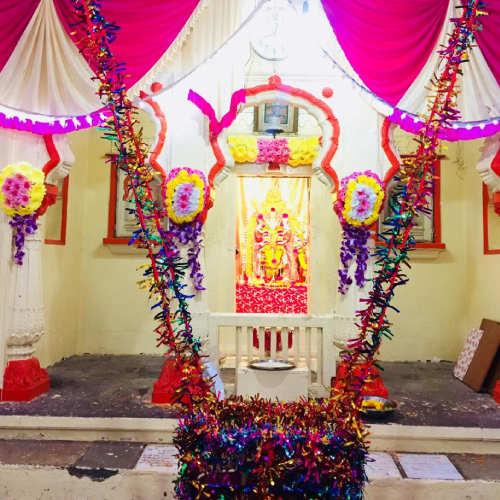
Ram Navami
This festival celebrates the birth of Seventh Avatar of Lord Vishnu and the hero of the Ramayana, the Sanskrit epic of 24,000 stanzas, Shri Rama who was born on the 9th day of Chaitra month. Shri Ramchandra killed the evil king Ravana. A continuous recital of the book takes place for about a week prior to the celebration and on the day itself, the highlights of the story are read in the temple.
Perumal Tirumala
Perumal Tirumala is a festival in honour of Lord Vishnu celebrated by the Vishnubhaktis. This festival lasts for eleven days or longer. In the first two days the idols of Lord Vishnu and his companions are carried about in the streets with great pomp in a palanquin. On the third day he is carried on his vehicle Garuda. On the fourth Vishnu is carried on the lord Hanuman, on the fifth day He is carried on a lion, the sixth under a small arch or bow of metal called Tiruvasi, on the seventh under a large Tiruvasi, on the eighth on a horse and on the ninth in a large car. On the last day, the tenth day, which is the great day of the feast, Vishnu is for the last time carried about early in the morning. In the evening of the eleventh day, which is called Dhar-ba-tirumal, he and his consort Lakshmi are seated on a couch of Dharba-grass, placed on a aft in a tank and Brahmans, musicians and dancing girls, having entered on the same raft, it is floated from one end of the tank to the other, thrice, in the sight of a multitude of people standing on the banks.
